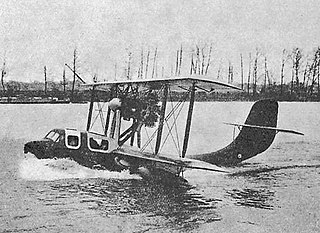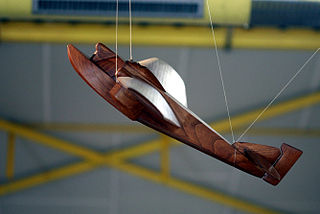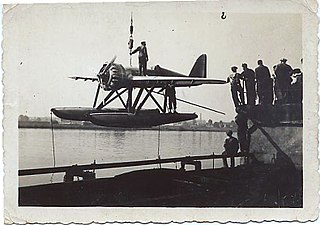
The Amiot 143 was a 1930s French 5-seat Multiplace de Combat (M.5) designed to meet 1928 specifications for a monoplane capable of day and night bombing, long-range reconnaissance and bomber escort.

The Farman F.220 and its derivatives were thick-sectioned, high-winged, four engined French monoplanes from Farman Aviation Works. Based on the push-pull configuration proven by the F.211, design started in August 1925 and the first flight of the prototype was on 26 May 1932. The largest bomber to serve in France between the two world wars was the final F.222 variant. One variation was intended to be an airliner.

The Bréguet 521 Bizerte was a long-range military reconnaissance flying boat built by the French aviation company Breguet.

The Latécoère 521 was a French six-engined double deck flying boat designed and manufactured by Pierre-Georges Latécoère. At the time of its completion, it held the distinction of being the largest aircraft to be built in France as well as one of the first large passenger aircraft capable of flying trans-Atlantic routes.

The CAMS 55 was a reconnaissance flying boat built in France in the late 1920s which equipped the French Navy throughout the 1930s.
The Latécoère 611 was a French four-engined maritime reconnaissance flying boat of the Second World War. Although only a single prototype was completed, this served throughout the war, being used by both the Vichy French and Free French navies.

The Potez 452 was a French flying boat designed and built by Potez in response to a French Navy specification for a shipboard reconnaissance machine for use on its battleships and cruisers.

The Bréguet 730 was a French flying boat of the 1930s. Built to meet the requirements of the French Navy, it was ordered into production but no aircraft were delivered before France surrendered to Germany in June 1940. Four remaining incomplete airframes were completed after the end of World War II, serving with the French Navy until 1954.

The Franco-British Aviation Model 290 was a French four-seat amphibian flying boat built by the Franco-British Aviation Company (FBA) as a replacement for the Model 17 in French naval service.

The Nord 1400 Noroit was a French reconnaissance and air-sea rescue flying boat designed and built by Nord Aviation for the French Navy.

The SNCAC NC.211 Cormoran was a large four-engined military transport aircraft for passengers and cargo designed and built by SNCAC from 1945.

The Lioré et Olivier H-190 was a biplane flying boat aircraft designed and produced by the French aircraft manufacturer Lioré et Olivier.

The Sud-Est SE.200 Amphitrite was a flying boat airliner built in France in the late 1930s, originally developed as the Lioré et Olivier LeO H-49 before the nationalisation of the French aircraft industry. It was a large, six-engine design with a high-set cantilever monoplane wing, and twin tails. It was developed in response to a French air ministry specification of 1936 for a transatlantic airliner for Air France with a range of 6,000 km (3,700 mi) and a capacity for 20 passengers and 500 kg of cargo. Designs were submitted by Latécoère, Lioré et Olivier and by Potez-CAMS as the Laté 631, LeO H.49 and the Potez-CAMS 161 respectively, and examples of all designs were approved for construction. A large mock-up, resting on simulated water, was displayed at the 1938 Salon de l'Aéronautique.

The Richard-Penhoët 2 was a 1926 French, large, five-engined flying-boat airliner, carrying up to twenty passengers. The sole example flew in 1926 but was lost in 1928 during testing after modification to improve performance.

The Bernard H.V.40 was a racing seaplane designed by Société des Avions Bernard for the French government to compete in the 1929 Schneider Trophy.

The SNCAC NC.4-10 was a twin-engine floatplane torpedo bomber built in France in the late 1930s. It was one of several prototypes competing for a Navy specification but no contracts were awarded after the military lost interest in the type.

The Loire 250 was a French single-seat fighter monoplane designed and built by Loire Aviation of St. Nazaire.
The Bréguet 610 was a reconnaissance seaplane built in 1934 by the Bréguet company.

The Levasseur PL.200 was an observation seaplane built by Levasseur in the mid-1930s. It was a high-wing monoplane with a short, all-metal fuselage nacelle at mid-span, and a wing made of metal.
The SNCAC NC-420 was a French observation flying boat built by SNCAC in the 1940s. It was intended to operate from the ships of the French Navy, but although a single prototype was completed, it never flew.


















